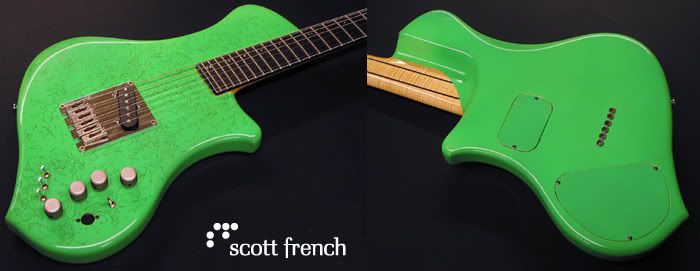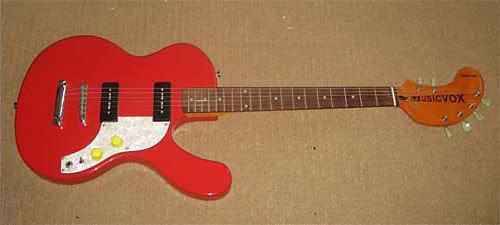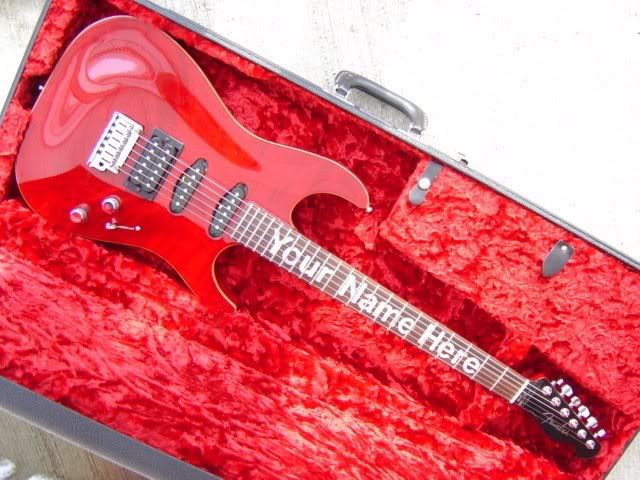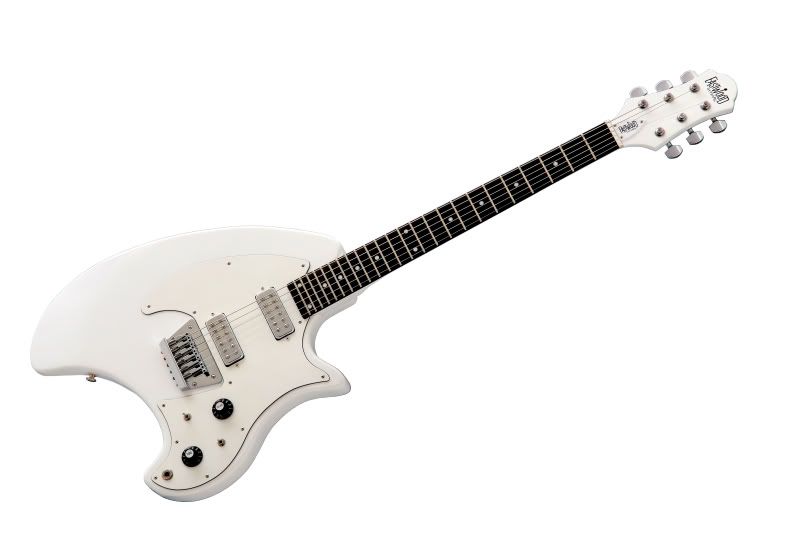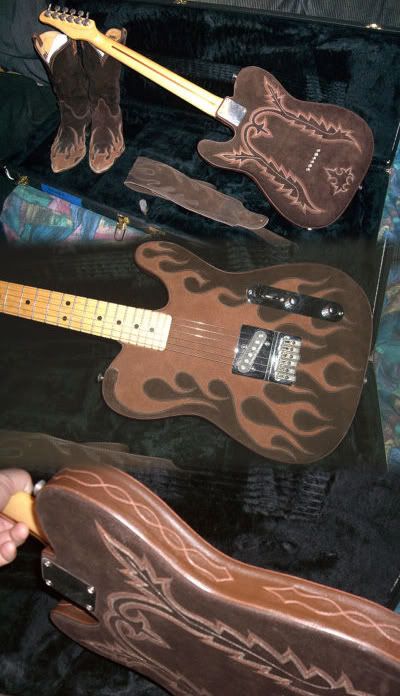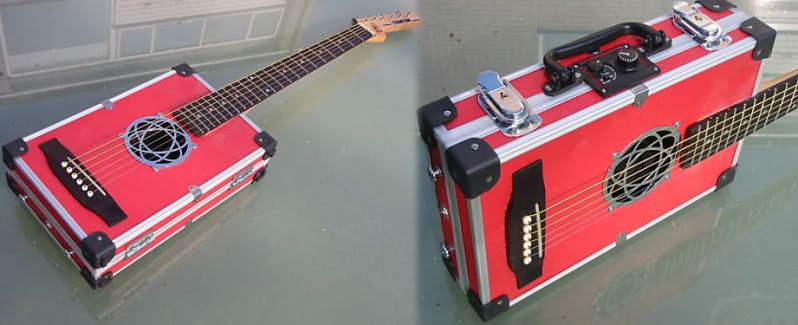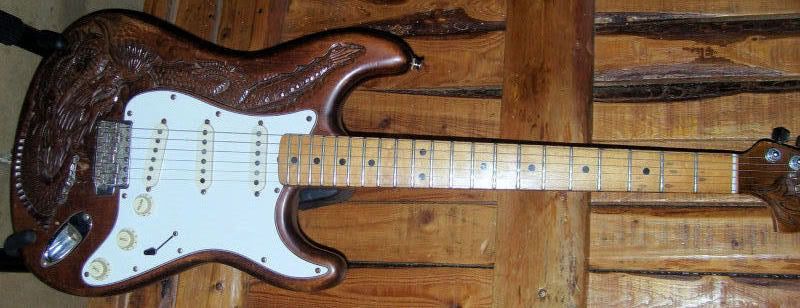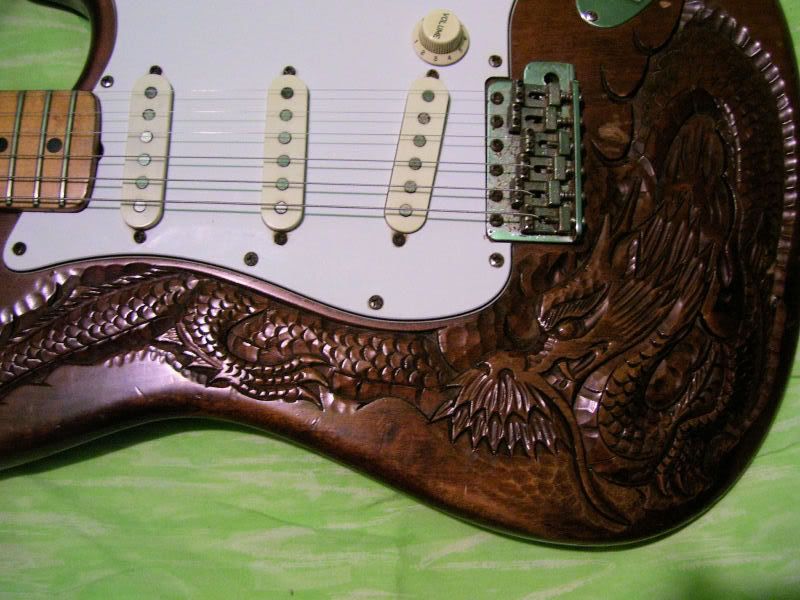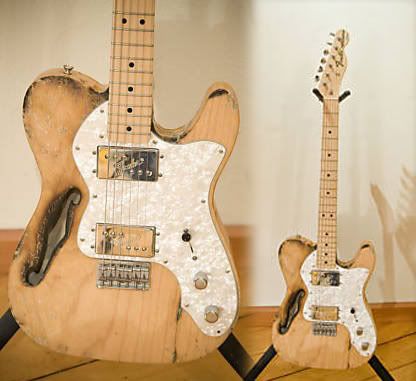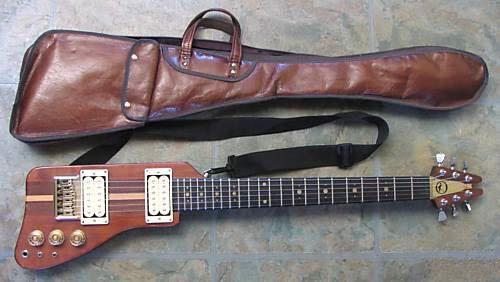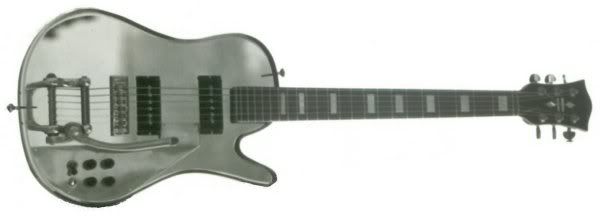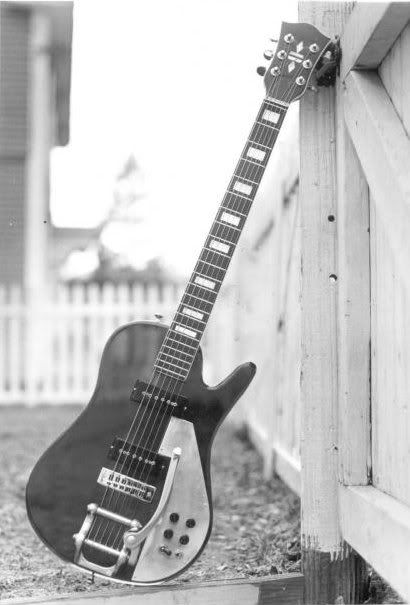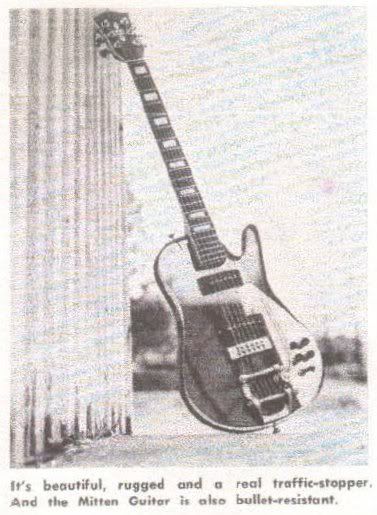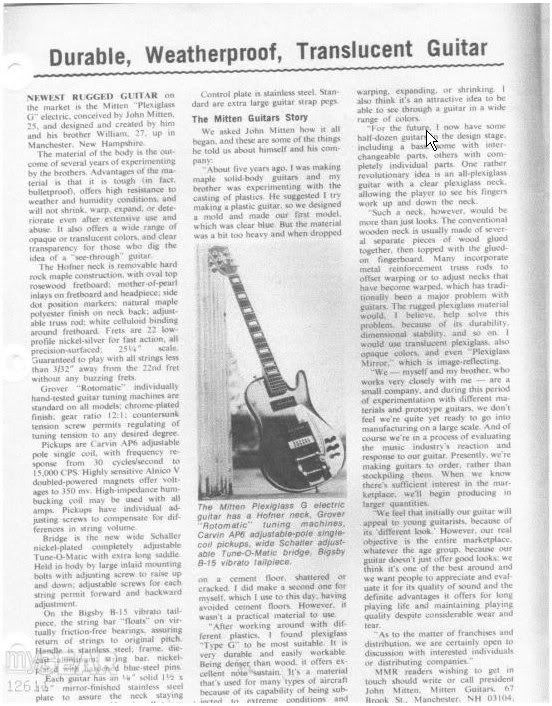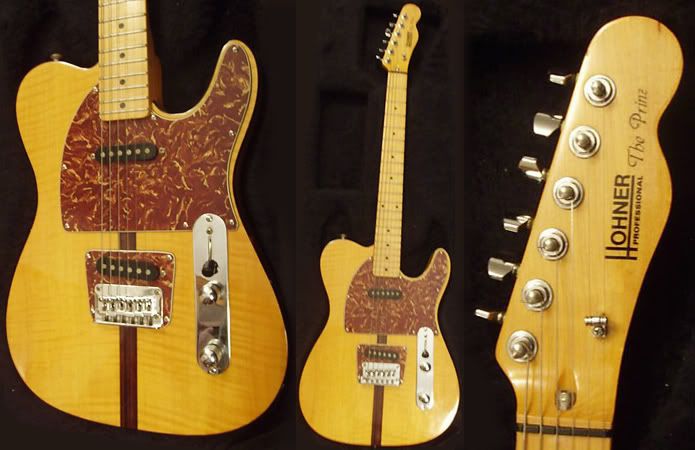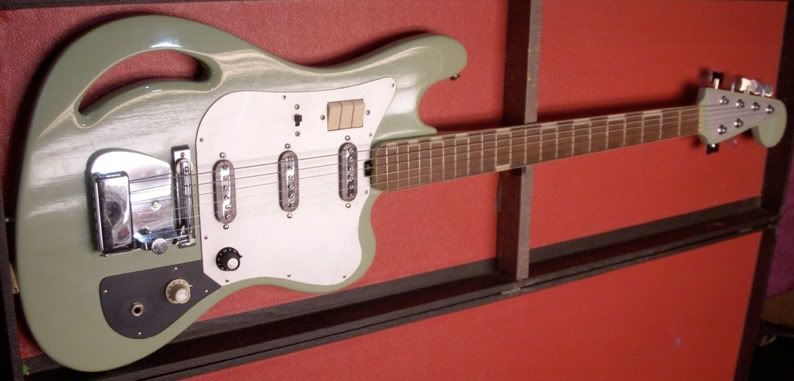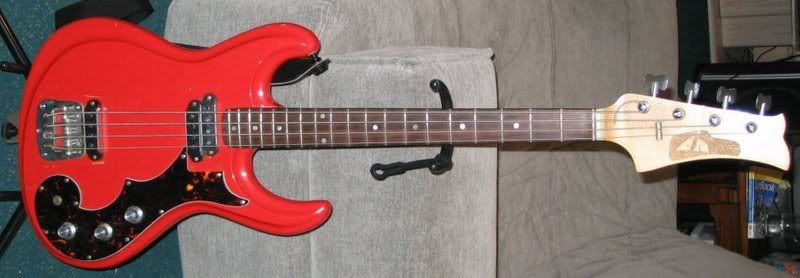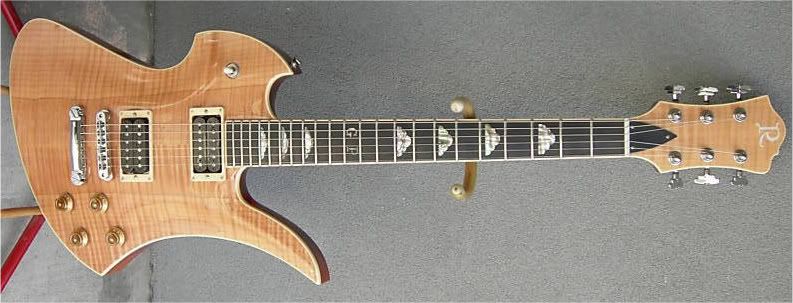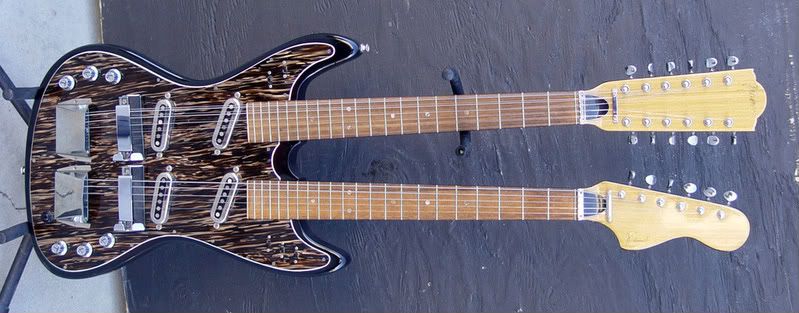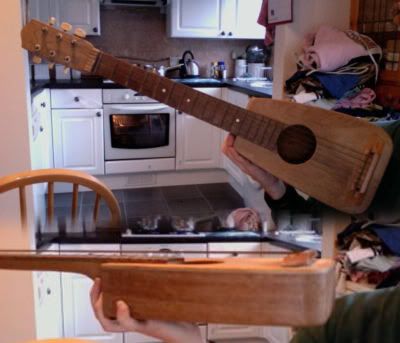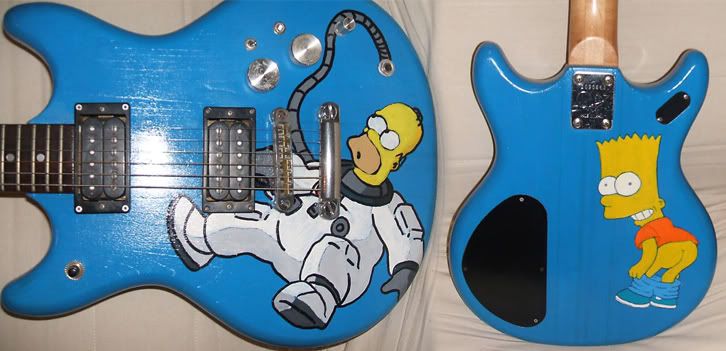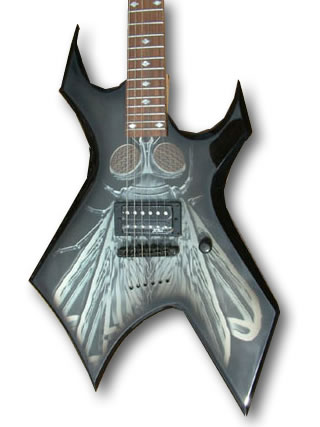The following is an article written by Glynn from the Generally Electric guitar blog, and concerns an unassuming-looking but highly desirable guitar from the genius that was Leo Fender:

G&L was founded by George Fullerton and a certain Leo Fender in the late 1970s following the deterioration of Fender’s relationship with Musicman, and the SC-2 was one of G&L’s earliest production guitars.
They’re perhaps best known as Bob Mothersbaugh of
Devo’s guitar of choice but, for me, inspiration came from early
Helmet and
Band Of Susans records. The latter even used SC-1s, customised with pick-guards, in their album photography and on posters, apparently catching the attention of Leo Fender himself. Nevertheless they remain a relatively obscure guitar.
Being of rather Spartan design, the SC models are often thought of as “student” or "economy" guitars, though I’ve heard a conflicting story along the lines that G&L's intention was to produce a reasonably priced, high quality US built instrument to compete with inexpensive instruments from the Far East. Whatever the motivations, the SC’s utilitarian appearance is perhaps an acquired taste and, possibly as a result of this, it was never a terribly popular guitar. In fact, by 1984 the body shape had been completely re-designed, supposedly at the behest of a G&L sales team who were struggling to convince buyers with the original design.
Nonetheless, there's nothing budget about the construction, specification or tone of these guitars. Body, neck and fingerboard are all of high quality maple, while the hardware and Magnetic Field Design pickups are the same as those used on G&L's more expensive guitars. In fact the only area where any obvious financial savings have been made in the guitar's construction, other than the function over form design, is the use of fairly cheap looking plastic tone and volume controls which, if the owner found them particularly offensive, could be replaced for pocket change. Really, the SCs remain an outstanding example of how to make a no-frills affordable guitar, and it's a shame that, these days, manufacturers concentrate their efforts on making their entry level instruments ape the slick appearance of their pricier models, rather than focusing on build and component quality.
Ultimately, only around 600 SC-2s were made, and the registry at G&L owners’ site
Guitars by Leo records only 100 or so, many of which have been modified to varying degrees, and often to their detriment. Mine, a lucky eBay find, was no exception, but too good an opportunity to miss all the same.
On first opening the case the smell of paint was overpowering. It had been treated to a rather uneven spray-can paint job and the fretboard, including the fret wire itself, had been varnished with a brush. Worse yet, there was a tellingly humbucker shaped indentation between the two original pickups and, more tellingly still, the control plate had two additional holes drilled into it.
With the SC-2’s rare-bird status in mind, I decided to set about restoring my SC-2 to its original condition, or as close to it as possible. This began with the painstaking task of gently removing the excess varnish from the fret wire with a razor blade and cleaning the tarnished hardware with Brasso. I then managed to source a replacement control plate from a 1983 SC-3 body I found on eBay.
Having never refinished a guitar before, and concerned about what I’d find under the existing paint, I decided to let a professional finish the job. In the end, I settled on David Ridgeway of
Ridgeway Guitars who, over the course of a couple of months, made me very grateful I didn’t try to do the work myself.
Having stripped the spray paint, David discovered an unevenly gouged hole between the pickups which had been filled with soft putty. Having removed the putty, he re-routed the hole and then filled it with a properly sized block of maple. After sanding and priming, the guitar was finally finished in blue.
Oddly, as this work was being done,
G&L re-issued the SC-2 in updated form. Well, actually G&L say that it’s “not a re-issue” and is, in fact, an “evolution”, but I think their efforts to evolve the design have robbed it of all the charm that made the original truly special. If you want one, my advice is to keep your eye on eBay in the US and buy the real deal.
 This is one seriously ugly Strat. The seller claims that it is "hand-crafted" and "made with all-American Fender parts". I don't care. It's gross. The textured and patterned scratchplate looks bad enough, but what's the deal with the stuck-on dragon "carving" which I can only assume they copied from the much more tasteful Aria Dragon Strat? And why is the "carving" coloured black so that it looks like an oil slick? If you check the photos on the linked page, you'll see it also has skull-shaped strap buttons. Can I say "gross" again?
This is one seriously ugly Strat. The seller claims that it is "hand-crafted" and "made with all-American Fender parts". I don't care. It's gross. The textured and patterned scratchplate looks bad enough, but what's the deal with the stuck-on dragon "carving" which I can only assume they copied from the much more tasteful Aria Dragon Strat? And why is the "carving" coloured black so that it looks like an oil slick? If you check the photos on the linked page, you'll see it also has skull-shaped strap buttons. Can I say "gross" again?






